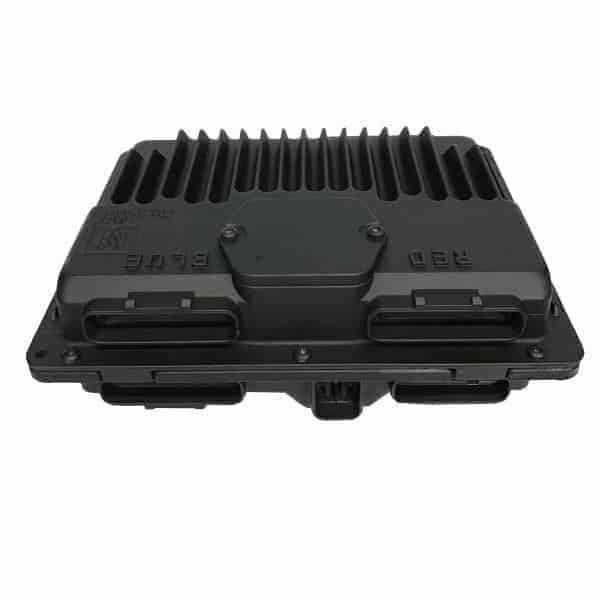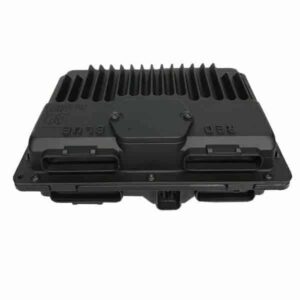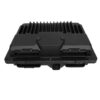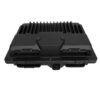Restore Your GM Truck’s Performance and Reliability
As a technician with over two decades of experience under the hood, I’ve seen countless GMT400 and GMT800-era trucks come into the shop with baffling issues. They’re running rough, stalling at intersections, or refusing to start altogether. More often than not, after hours of chasing down sensors and wiring, the root cause points to one component: the Powertrain Control Module (PCM). The PCM is the brain of your 1998-1999 Suburban 2500, and when it fails, it can create a cascade of frustrating and hard-to-diagnose problems.
This isn’t just another part; it’s a direct solution. We are offering a dependable, tested, used OEM PCM that solves these common failures. What makes our solution stand out is the vital pre-programming service. Before this module ships, we flash it with the latest official GM software calibration specifically for your vehicle using the VIN you provide. This eliminates the need for an expensive trip to the dealership for programming. It arrives at your door ready for installation, saving you time, money, and headaches.
A Technician’s Notebook: The Case of the Ghostly Stall
I remember a ’99 Yukon that came in on a tow truck. The owner was at his wit’s end. It would run perfectly for days, then suddenly stall in traffic with no warning and no check engine light. He’d already replaced the fuel pump and ignition control module. After connecting my scan tool, I noticed intermittent communication loss with the PCM. On a hunch, I lightly tapped the module’s case with a screwdriver handle, and the engine immediately stumbled. The problem wasn’t external; it was a microscopic, heat-related fracture on the PCM’s internal circuit board. Swapping in a quality, tested PCM like this one had the truck running reliably in under an hour. These are the kinds of real-world failures this part is designed to fix.
Is Your Truck Showing These Symptoms?
A failing PCM can manifest in numerous ways. If you’re experiencing any of the following, a faulty engine computer could be the culprit. I’ve personally linked these symptoms to PCM failure on hundreds of GM vehicles.
- ✔ Check Engine Light is on with internal module codes like P0601 (Internal Control Module Memory Check Sum Error) or P0606 (ECM/PCM Processor Fault).
- ✔ Vehicle will not start or has a crank-no-start condition.
- ✔ Intermittent stalling, especially after the engine has warmed up.
- ✔ Noticeable decrease in fuel economy.
- ✔ Harsh or erratic automatic transmission shifting.
- ✔ Communication errors with diagnostic scan tools.
- ✔ Apparent failure of multiple unrelated sensors at once.
A Straightforward Guide to Installation
Replacing the PCM on these GM trucks is a job most DIYers can handle with basic tools. The key is to take your time and follow the steps carefully. Getting your 1998-1999 Suburban 2500 PCM installed correctly is crucial for restoring function.
- Safety First: Always disconnect the negative terminal from your vehicle’s battery and secure it away from the post to prevent any accidental power surges.
- Locate the PCM: On most of these trucks and SUVs, the PCM is located in the engine compartment, typically mounted to the driver’s side inner fender or near the battery.
- Disconnect the Connectors: The PCM has several large multi-pin connectors. They have locking levers or tabs. Carefully release the locks and gently pull the connectors straight out from the module. Do not force them.
- Remove the Old Module: Unbolt the PCM from its mounting bracket. There are usually two or three bolts holding it in place.
- Install the New Module: Seat your replacement PCM into the bracket and secure it with the mounting bolts.
- Reconnect Everything: Firmly plug the wiring harness connectors back into the new module until they click and the locking levers are fully engaged. Reconnect your negative battery terminal.
- Perform Security Relearn: After installation, you will likely need to perform a security relearn procedure (often called Passlock or VATS relearn). This typically involves turning the key to the ‘ON’ position for 10-15 minutes, then ‘OFF’, and repeating two more times. This allows the Body Control Module to synchronize with the new PCM. Your vehicle will not start until this is completed.
Verified Vehicle Compatibility
This PCM, identified by service number 09366810, is a direct replacement for multiple part numbers and fits a wide range of General Motors vehicles. Please verify your original part number or match your vehicle from the list below. This module is compatible with units bearing service ID 9355699.
CHEVROLET & GMC SUBURBAN (1500/2500) 1998-1999 (Gasoline)
CHEVROLET TAHOE & GMC YUKON 1998-1999 (Gasoline)
CADILLAC ESCALADE 1999
CHEVROLET EXPRESS & GMC SAVANA VANS (1500/2500/3500) 1998-1999 (Gasoline)
CHEVROLET ASTRO & GMC SAFARI VANS 1998
OLDSMOBILE BRAVADA 1998
GMC ENVOY 1998
CHEVROLET S10 / GMC SONOMA 1998 (4.3L V6)
CHEVROLET BLAZER / GMC JIMMY 1998 (4.3L V6)
ISUZU HOMBRE 1998 (4.3L V6)
Note: Please confirm the ID 9355699 on your original module for guaranteed compatibility.
Frequently Asked Questions
Do I need to do anything after I buy it?
Do I need to do anything after I buy it?
Yes. After your purchase, you must send us your vehicle’s 17-digit VIN. We cannot ship the module until we have programmed it with your specific vehicle information and the latest GM software.
Is this a brand new part?
No, this is a high-quality, tested used part sourced from a salvaged vehicle. This provides a reliable and cost-effective solution compared to sourcing a new module, which is often difficult for vehicles of this age.
Will this fix my transmission shifting problems?
In many cases, yes. The PCM also controls transmission functions like shift points and line pressure. If the PCM is faulty, it can cause erratic shifting, which a replacement module will correct. However, this will not fix internal mechanical issues with the transmission.
What is a security relearn and is it difficult?
A security relearn synchronizes the new PCM with your vehicle’s anti-theft system. It’s a simple procedure that does not require special tools. The most common method involves cycling the ignition key and waiting, as described in the installation guide. Your truck will not start until this is done.
How do I find my original part number?
The part number is printed on a sticker on the case of your current PCM. You will need to locate and likely remove the module to read it clearly. It will typically be a large 8-digit number.



